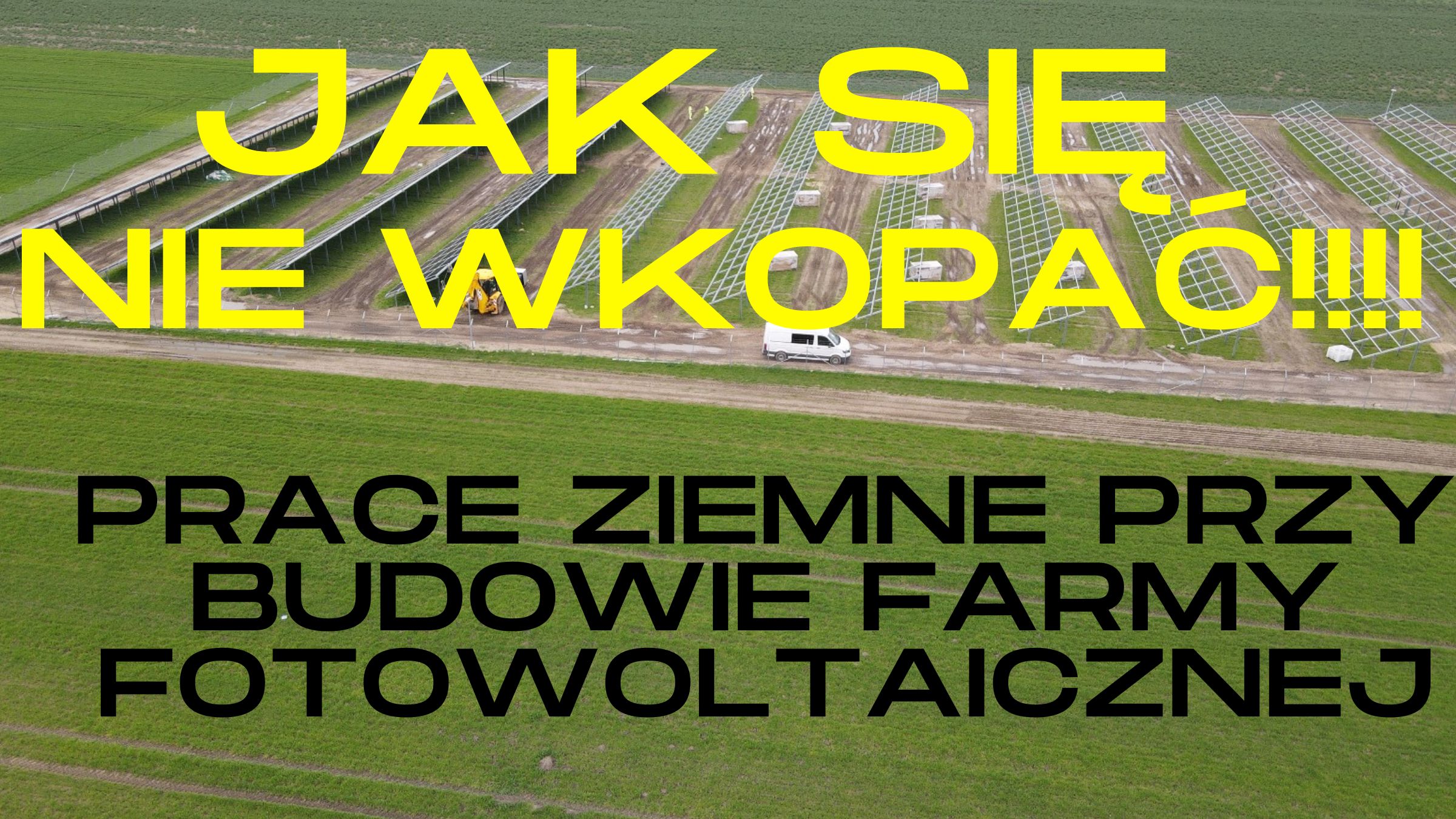Earthworks on construction of photovoltaic power plant
A photovoltaic power plant is an investment that, according to Polish construction law, must meet a number of legal and construction requirements. We’ll take a peek today at the earthworks that must accompany any PV farm.
- Geological survey: before starting the construction of a photovoltaic farm, it is crucial to conduct a geological survey of the site. This makes it possible to assess the composition and stability of the soil. This is necessary to design appropriate foundations for the supporting structures of the panels and other elements of the farm. Such as trafostations or poles for surveillance cameras. These studies also help identify possible areas of geotechnical risk.
- Pull-out tests: These are specialized tests conducted to evaluate the strength of the soil against pull-out forces. These intensities can act on supporting structures such as ground bolts. Pull-out test results are key to selecting the right installation methods and materials to ensure the stability and durability of the installation.
- Surveyor: staking of fence and tables, trafostation, poles for cameras (CCTV monitoring): Surveying work is necessary to accurately delineate the location of key elements of the photovoltaic farm, such as the security fence, mounting tables for solar panels, the position of the trafostation and poles for CCTV monitoring systems. Staking allows for accurate planning and optimization of the placement of elements on the farm.
- Killing the fence: This is the step of physically installing the fence around the photovoltaic farm site. The fence provides security and protection of the installation from unauthorized access and animals.
- Pile driving: This is the process of driving support poles (e.g., for photovoltaic panels or fencing) into the ground using specialized equipment – pile drivers. This method makes it possible to quickly and efficiently place poles in difficult ground conditions.
- Excavation for DC, AC cabling and trafostation: Excavation is necessary to lay the direct current (DC) wiring from the photovoltaic panels to the inverters, the alternating current (AC) wiring from the inverters to the grid, and the power and control cables for the trafostation. Excavation must be planned to ensure optimal cable path and protection.
- Excavation along the perimeter (most often) for cooper and CCTV: These are special excavations carried out along the perimeter of the farm for the laying of cooper (a metal strip used to ground the fence) and cabling for CCTV monitoring systems.
- Connection: Etab involving the construction of a photovoltaic farm power connection to the local distribution network. This includes both the physical connection and obtaining the necessary approvals and technical documentation.
- Partial inspections of disappearing works: These are inspection inspections of completed work that will later be unavailable for verification, such as after backfilling of excavations. These acceptances are necessary to confirm the quality of workmanship and compliance with the project.
The implementation of the above-mentioned stages requires cooperation with experienced specialists and strict adherence to current building standards and regulations. This guarantees the safety of all work and its smooth progress!
Are you planning to build your photovoltaic farm or looking for an O&M service company?
Do you want to purchase a photovoltaic or wind farm project and need an efficient and professional audit / due diligence?
are you looking for a photovoltaic panel recycler or cleaning company for photovoltaic plants and farms?
When you are ready to act,
then so are we!
